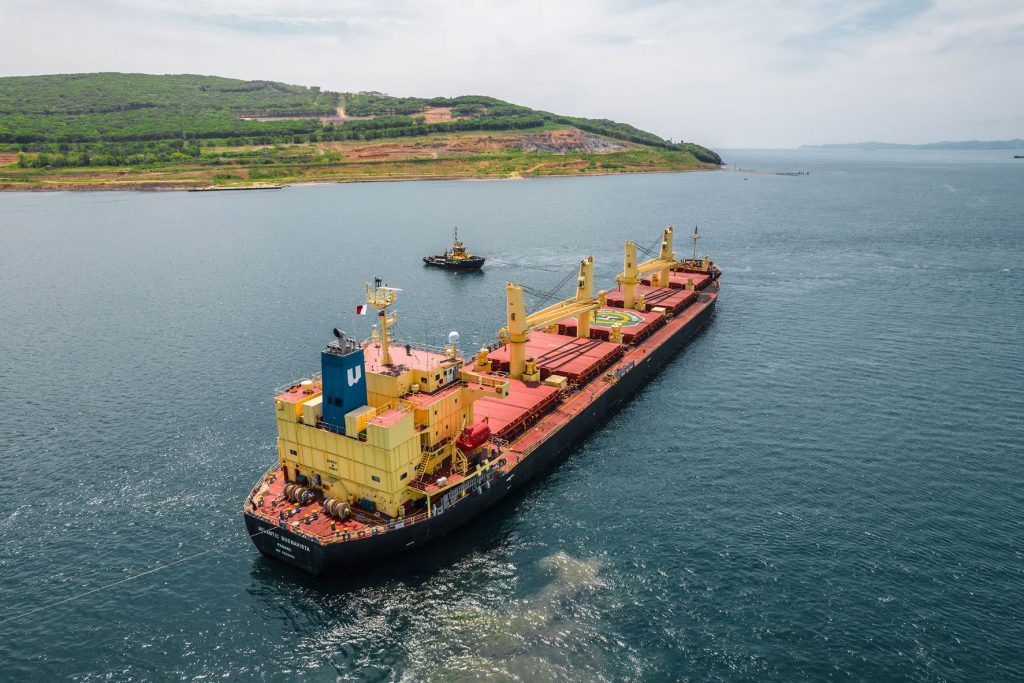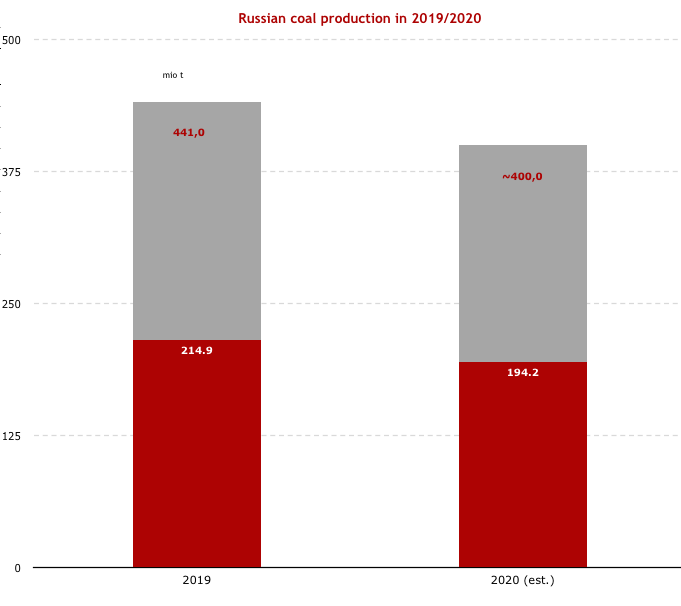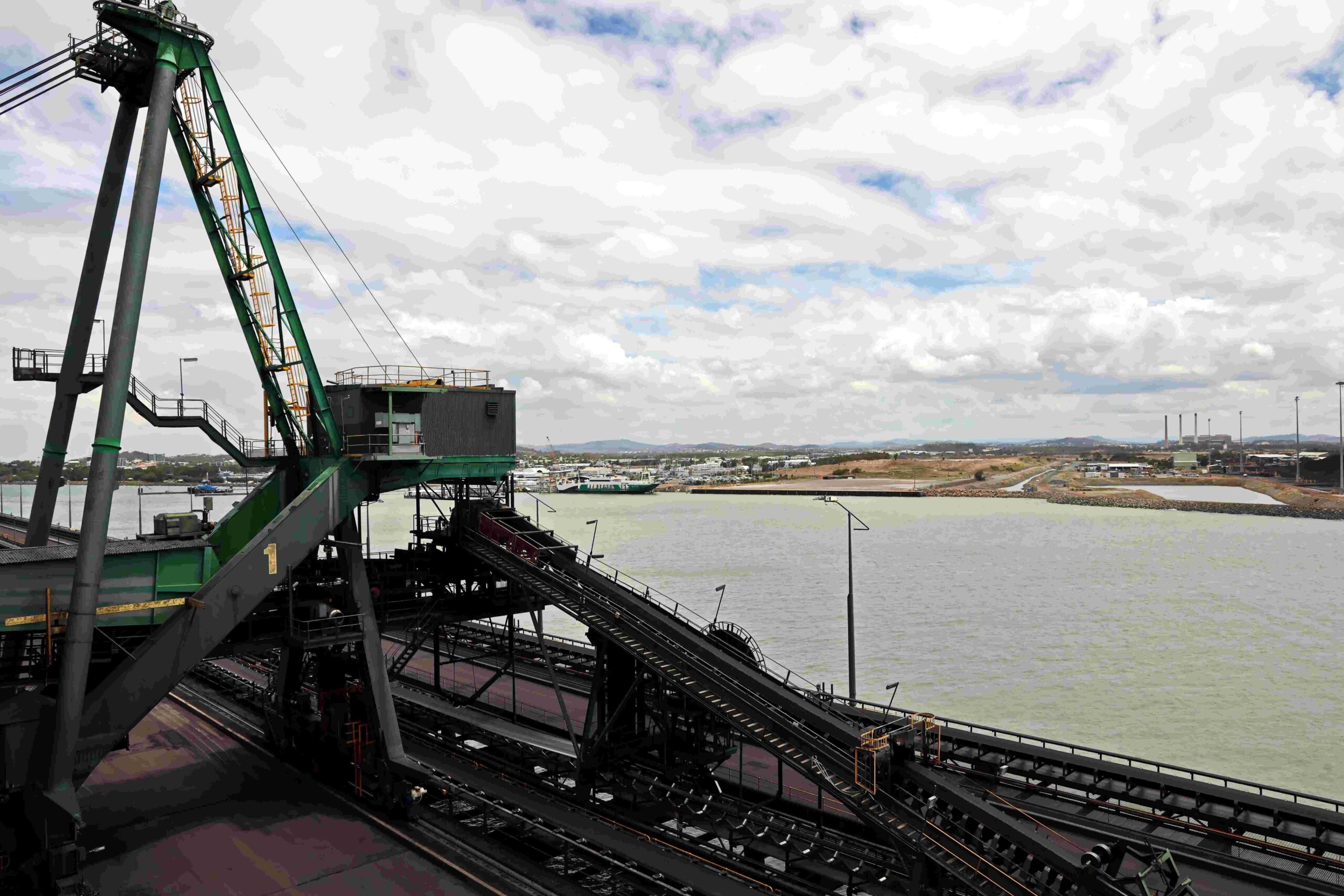

Last week, thermal coal indices on the European market rose above 355 USD/t on the back of the announced embargo on imports of all types of coal from Russia, approved by EU countries as part of the fifth package of sanctions. The embargo provides for a ban on the purchase, import or transit transportation of Russian coal and will take effect on August 10. Until then, the parties will be allowed to fulfill the contracts concluded before April 9. Prices were also supported by Poland’s announcement that this week its government will impose an independent ban on coal imports from Russia, which will be effective immediately. The Polish government also asked seaport operators to prepare for the imports and storage of up to 10 mio t of coal.
Europe plans to replace 50 mio t of Russian material with supplies from the United States, Australia, Indonesia, Colombia and South Africa. At the same time, a survey of VDKI (Association of German Coal Importers) participants showed that 21% of respondents believe that replacing Russian coal in the short term is impossible, and the same number of respondents consider that the substitution is achievable only at a significantly higher price. In order to reduce coal consumption, last week Germany put forward a bill (the Easter Package) to increase solar generation capacity to 215 GW instead of 200 GW by 2030 and wind generation to 140 GW instead of 91 GW.
South African material prices climbed above 325 USD/t amid tensions in the international coal market and increased demand from European countries, trying to replace Russian coal supplies. Demand is also increasing from India due to power shortages. Indian authorities have already announced the need to increase imports despite high prices. Currently, coal-fired power plants with a combined capacity of 7,295 MW are forced to idle because of fuel shortages, as consumption has significantly increased since the beginning of April in anticipation of the summer season.
In China, spot prices of 5500 NAR fell by almost 16 USD/t to 188 USD/t FOB Qinhuangdao. Quotes of steam coal in China’s domestic market continued to decline amid a drop in consumption in a number of provinces, including Shanghai, Jiangsu and Zhejiang, where restrictions were imposed following the spread of COVID-19. Pressure is also exerted by buyers who took a wait-and-see attitude in anticipation of further decline in quotations and the appearance of signs of economic activity recovery. In addition, some coal producers lowered prices due to rapidly growing stocks, and power plants noted that capacity utilization levels reduced significantly and are comparable to the New Year vacation period.
The higher trading activity of European consumers had a positive effect on Australian material indices above 335 USD/t related to the ban on imports of Russian coal. Prices were also supported by a slowdown in coal shipments from New South Wales to the port of Newcastle due to scheduled work on the railroad on April 5-7 and an increase in the vessels queue.
Indonesian 5900 GAR quotes continued to fall to 185 USD/t on reduced trading activity by Chinese buyers caused by the spread of COVID-19 in China. Indonesia’s largest mining company Bumi Resources said it plans to increase extraction by 9-15% in 2022 to 85-90 mio t, although last year the company missed that target, having produced 78 mio t, the lowest figure since 2012, caused by heavy rains throughout the year.
Australian metallurgical coal prices spiked above 505 USD/t amid growing interest from Asian and European buyers driven by geopolitical uncertainty.
Source: CAA













